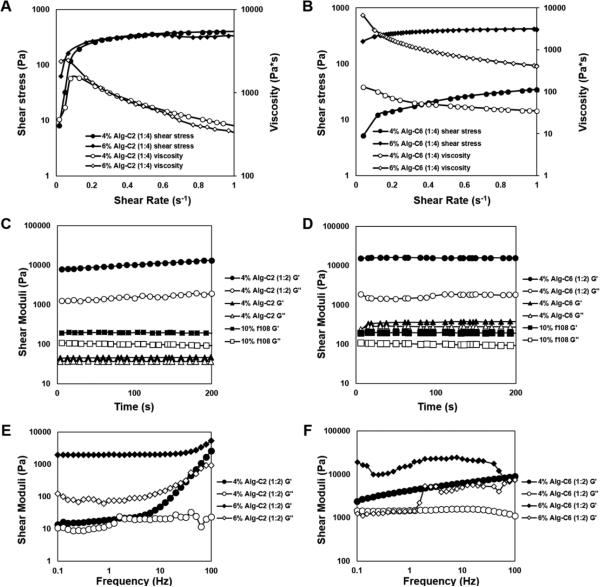Figure 2.
Rheological experiments were performed at 37 °C to verify formation and physical integrity of the supramolecular alginate network. (A, B) Continuous, increasing shear rates allowed for the determination of viscosity and shear stress of formed hydrogels; A) Alg-C2 and B) Alg-C6. The shear stress increased with an increase in shear rate from 0 to 1 s−1, demonstrating viscoelastic behavior. (C, D) Oscillatory time sweep experiments for hydrogel pre-curser solutions, Alg-g-CD and Pluronic® F108, and formed hydrogels at 1% strain, 10 Hz, 37 °C; C) Alg-C2 and D) Alg-C6. The storage moduli increased from 100 Pa for single polymer constituents to 10 kPa for 4% (w/v) Pluronic® F108:Alg-g-CD hydrogels. (E, F) Oscillatory frequency sweeps were performed at 0.5% radial strain; E) Alg-C2 and F) Alg-C6.

